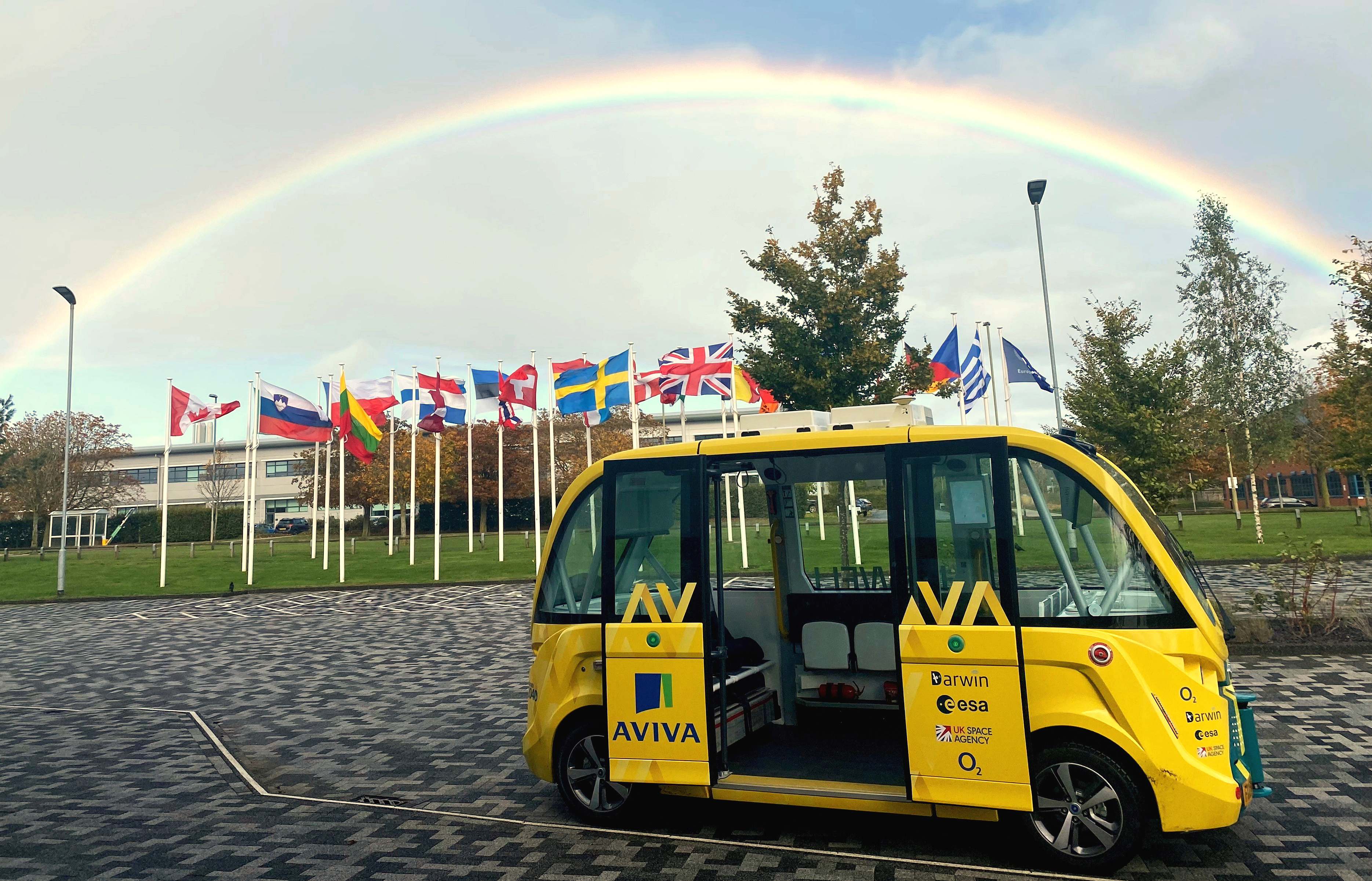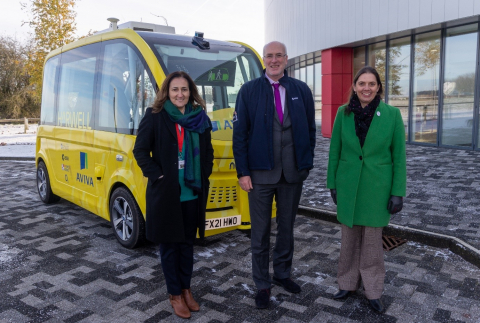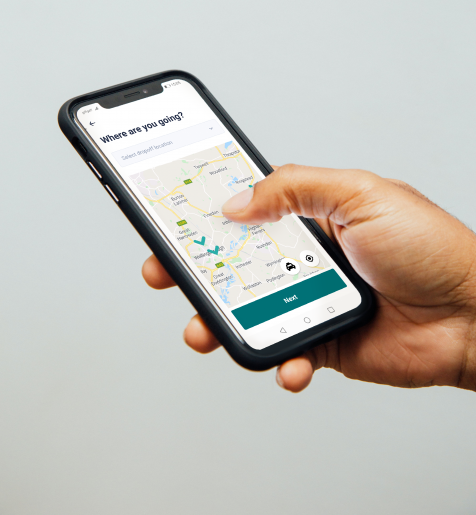Marlink
Slettestrandveien 2
4032 Stavanger
Norway

Slettestrandveien 2
4032 Stavanger
Norway
Hiring decisions impact everything a company does, yet these crucial choices are often clouded with the limitations of human decision-making, called cognitive (or unconscious) biases. As leaders are grasping the importance of embedding diversity into their workforce, not just to reach diversity goals, but for performance outcomes, there is a surging demand for technological solutions to help organisations achieve ‘blind’ recruitment.
Based in Oxford, UK, MeVitae was founded by a neuroscientist and a computer scientist who set out to provide an AI-powered blind recruiting solution, mitigating algorithmic and unconscious biases from job applications. However, as a small team, MeVitae needed funding and expertise to develop their vision into a tangible prototype. That’s where ESA Business Applications came in, to support MeVitae and deliver a never-seen-before application of space technology into the world of human resources (HR).
Riham Satti, CEO and co-founder of MeVitae said: “Pairing with ESA really skyrocketed our capabilities in the development phase and helped us build the products that companies are using today.”
Over 18 months, ESA’s financial support and expertise enabled MeVitae to harness a powerful technology originally developed by ESA to analyse telemetry data to detect faults in space equipment. Together, MeVitae and ESA pivoted the technology to analyse typical hiring patterns, to identify anomalies and undetected biases. This helps organisations to understand their past hiring behaviours and improve their recruitment performance.
“The issue of diversity in recruitment and hiring practices is one of the biggest being faced nowadays, particularly for those recruiting and hiring within technical industries. We’re proud to have supported the MeVitae team to marry space tech with HR, addressing the United Nations’ Sustainable Development Goal on gender equality in a unique way.” commented Rita Rinaldo, Head of Projects and Studies Implementation Division at ESA.
Together with the anomaly-searching capabilities based on ESA technology, MeVitae offer companies a recruitment platform plugged into the leading Application Tracking Systems. This enables recruiters to automatically redact over 20 types of information from job applications that could be subject to bias, including name, gender, and university, in any type of application document, including CVs and covering letters.
“The hiring process plays a pinnacle role in developing diverse teams and our work is relevant now, more than ever. We are proud to offer organisations a proven method of driving diversity in the workplace, with our clients reporting increases of more than 30% in gender and ethnic diversity since using our Blind Recruiting solution,” said Riham.
In succession with the ESA project, MeVitae entered the US market, growing by 200% over the last year. Moreover, the company closed an investment round in just three weeks, before adding Microsoft and Oracle to their list of partners. This will enable the company to continue scaling, embarking on operating globally to keep up with its increasing demand.

Via Albert Einstein, 6
20090 Cusago MI
Italy
Via Narni 211, Piano II
05100 Terni TR
Italy
Italy

Visitors and staff at Harwell Science and Innovation Campus, Oxfordshire, will be the first in the UK to be able to use the autonomous shuttle. The service is run by Darwin on two separate routes across campus, both of which begin at ESA’s European Centre for Space Applications and Telecommunications (ECSAT). The service was launched during an event held at ECSAT at the end of November.

Autonomous vehicles rely on terrestrial networks to stay connected. However, this prevents them from being used in those locations where the networks are unreliable or non-existent, which includes many rural areas. By integrating satellite communications with 5G, the resulting ubiquitous connectivity offers the potential for self-driving vehicles to operate in any location.
Darwin Innovation Group’s shuttle transmits data in real time via 5G networks and satellite communications channels. Its 1-year pilot phase will demonstrate how self-driving vehicles operate in a real-world setting. Telematics data is transmitted via mobile operator O2 5G networks and a geostationary satellite operated by HISPASAT. Although the shuttle is autonomous, there will be an operator on board throughout the trial with access to safety controls.
The shuttle was built by Navya and uses LiDAR sensors, cameras and ultrasound to navigate around obstacles, plus a GNSS satellite antenna for positioning data. It also uses technology developed for Darwin’s self-driving car, also supported by ESA and the UK Space Agency. By integrating the Darwin technology stack and fleet management platform, Darwin is tracking the shuttle as it travels around Harwell Campus and gathering operational data that will help it create a minimum viable product. The aim is to increase confidence in operating autonomous shuttles on public roads and provide information to both regulatory bodies and companies involved in all aspects of future commercial services, such as insurance companies.
The trial marks a step forward in providing greener public transport in the UK, as noted by the UK’s Science Minister George Freeman, during a visit to Harwell Campus and ECSAT. The shuttle is battery powered and emits zero carbon.
Any wider adoption of similar autonomous public transport vehicles could help the UK in its efforts to meet its emissions targets. It could also contribute to cleaner air initiatives and bids to reduce traffic noise. On the Harwell Campus, where the trial is operating a free service during weekdays, it is providing an easier way for people to access campus amenities, including leisure services, and reducing the number of cars, helping to reduce traffic accidents.
ESA is stepping up its efforts to use space to combat the climate crisis through Agenda 2025 and has launched three accelerators to unite European space actors, including “Space for a green future”.
The autonomous shuttle is also of interest for ESA because hybrid satellite-terrestrial networks present opportunities to provide ubiquitous coverage, seamless connectivity, and network resilience. Transport is one of the vertical markets that ESA has identified as having the potential to benefit from this in the future. ‘Space for 5G and 6G’ is a Strategic Programme Line for ESA within the ARTES 4.0 funding programme.
Elodie Viau, ESA’s Director of Telecommunications and Integrated Applications, said: “5G, and soon 6G, is set to transform society. For this to happen, communications networks in space have to be integrated with terrestrial ones. ESA is excited to champion the Harwell shuttle service, a project that will both showcase the reliable, instant 5G connectivity delivered by converged space and ground telecommunications networks and bring low-emissions, autonomous vehicles to the roads.”
The autonomous shuttle has already provoked interest in running similar services elsewhere in the UK. The Highlands and Islands Transport Partnership, HITRANS, for example, is interested in a trial with a view to adopting a similar service at Inverness Airport in Scotland.
Travellers in the UK are enjoying quicker and cheaper journeys while also cutting carbon emissions thanks to a new public transport app backed by the European Space Agency (ESA).

Everybody knows that you can sometimes wait a long time for a bus and then three come along at once. Or even worse, the service is cancelled or non-existent. UK-based start-up, Tandem is making such a tedium a thing of the past with its on-demand transport app, launched in September 2020 and backed by ESA Space Solutions alongside the UK Space Agency and the Department for Transport.
In an example of how green technology is being increasingly underpinned by space-based assets, the app uses satellite data to create personalised journeys. Users enter information on their whereabouts, their preferred pick-up time, and their destination, effectively creating a customised shuttle service. Whereas traditional public transport routes despatch vehicles to a timetable, Tandem sends an appropriate vehicle to the pick-up point only when requested, increasing efficiency, and reducing costs. Tandem also covers areas where no public transport alternative exists, tailoring to towns and small cities, allowing people to get to their place of work or to visit out-of-town family or friends, all the while leveraging business partnerships with local partners to provide attractive rates to passengers.
For one person a car will be despatched, but for larger groups and on frequent routes a people-carrier or minibus can be used. Journeys can also be combined to pick up and drop off multiple passengers en route. This avoids unnecessary carbon-emitting trips which contribute to climate change. And because vehicles are only sent when required, costs can be matched to those of existing bus services, with customers paying through the app. The app also allows passengers to track their vehicle and journey time using space-based positioning.
Tandem was founded in 2019 in Wellingborough, Northamptonshire and has received further backing from venture capital investors Ascension Ventures and Sustainable Ventures. The app’s pilot project was carried out with the backing of the ESA’s Business Applications Programme.
Rita Rinaldo, Head of the Partner-led and Thematic Initiatives Section at ESA Space Solutions said: “While many innovative emerging services are primarily targeting populous regions, ESA Space Solutions is pleased to support Tandem in tackling the so-called ‘transport-poverty’ affecting small towns and cities. The demonstration project showcased the ability of this solution to put many people into employment, unlock latent demand for taxi, minibus and coach companies and overall improve the quality of life of the citizens of the selected towns in an eco-friendly way.”
Tandem’s co-founder Tatseng Chiam added: "If you don’t own a car, transport outside big cities is expensive, inadequate and increasingly getting worse, preventing people from accessing employment and their social connections. Tandem's solution helps address a significant under-served commercial opportunity, as well as offering a positive impact for our passengers. It also supports our business clients who would otherwise struggle to fill many roles and positions because potential candidates literally can't get to their sites."
Tandem is already being employed by Transport for West Midlands – the body responsible for co-ordinating public transport in the region – and the University of Warwick. It is also used by private-sector employers Royal Mail, fashion outlet Primark and bookseller Waterstones to ferry around their workforces.
The company plans to roll out the technology to other education providers such as schools, especially those in rural areas which struggle to retain pupil numbers. It is also looking to provide services to train stations from remote areas. Routes can be tailored to suit companies’ and individuals’ needs and can be launched in as little as 48 hours.
